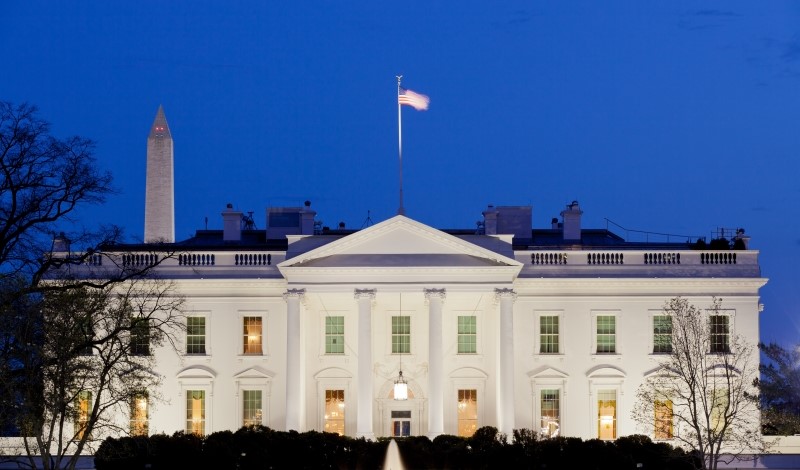
At the 2024 PPR Distinguished Lecture on Regulation, Administrator Revesz highlighted the Biden Administration’s regulatory reform efforts.
I am honored to be with you here at Penn for the 2024 Distinguished Lecture on Regulation. As Administrator of the Office of Information and Regulatory Affairs (OIRA), I lead the component of the Executive Office of the President of the United States charged with coordinating the review and analysis of significant federal regulations.
Narratives about OIRA tend to focus, often critically, on OIRA’s role under Executive Order 12,866 of ensuring that the benefits of a regulation justify its costs. This focus is often accompanied by calls to eliminate the role of benefit-cost analysis in regulatory review and, in some cases, to eliminate OIRA altogether.
But OIRA’s role is not restricted to OIRA’s work conducting the regulatory review of regulations under Executive Order 12,866. It extends also to other important regulatory areas, including agenda-setting, information quality, information collections, and public participation. Recent trends have made it even more critical for the executive branch to have an effective manager of the regulatory process.
OIRA’s role as manager of the regulatory process has several overarching characteristics. First, OIRA’s work is not restricted to reactively focusing on the portions of the regulatory process that occur once rules arrive at OIRA; it also includes a more active orientation that seeks to anticipate potential issues and shape the regulatory process to better address problems before they arise. Second, effective management focuses on improving policymaking by identifying, and facilitating the production of, more valuable and high-quality forms of information. Finally, OIRA’s management function ensures that regulatory decision-making appropriately avails itself of the knowledge of actors outside of the government to improve policy decisions.
Although OIRA’s active management of the regulatory process goes far beyond centralized review, it is helpful to start with the basics of that process.
The process of centralized review of regulations has a few essential components. To start, agencies submit regulations to OIRA, which determines whether each regulation meets the criteria for centralized review, including whether it meets the criteria for a more rigorous benefit-cost analysis. If a regulation meets any of these criteria, OIRA ensures that all relevant executive branch agencies and components of the Executive Office of the President are able to review the regulation. OIRA reviews the regulation itself as part of this process, but also facilitates a productive exchange of edits and comments between the agency and the reviewers. If disagreements emerge during this process that cannot be resolved at a staff level, OIRA ensures that the disagreements are elevated to more senior officials (up to the President, if necessary) in an orderly process until a final decision is reached. Once all issues have been resolved, OIRA concludes its review and the agency publishes the regulation.
Centralized review has been alleged to be anti-regulatory in nature. In particular, narratives about OIRA typically state that centralized review of regulations was introduced in one fell swoop as an anti-regulatory initiative of the Reagan Administration. This standard narrative is wrong in three important ways.
First, the centralized review of agency actions has much deeper roots, going back as far as the New Deal. The need for statistical coordination increased markedly with the enactment of the early New Deal programs, “since they involved not only statistics but [also] the administrative figures required to establish and enforce … regulations for individual enterprises.” To address this need, President Franklin D. Roosevelt established the Central Statistical Board (CSB) in July 1933 to manage review of, and coordinate, these information collections. President Roosevelt eventually transferred the CSB’s functions and personnel to the Bureau of the Budget (which would eventually be reorganized into the Office of Management and Budget, in which OIRA sits today), which itself was housed within the newly-created Executive Office of the President (EOP).
Second, centralized review has been of interest to Presidents of both parties throughout nine decades. By 1942, the Bureau of the Budget had been tasked with centralized review of all proposed legislation, veto recommendations, and executive orders. Throughout the 1950s and 1960s, Presidents Harry S. Truman, Dwight D. Eisenhower, and John F. Kennedy also expanded the duties of the Bureau to include mediating interagency disputes. President Lyndon B. Johnson’s concerns about ineffective implementation of his Great Society programs led him to task the Bureau of the Budget with coordinating their implementation, both grantmaking and regulations. After reorganizing the Bureau of the Budget to sit within the Office of Management and Budget (OMB), the Nixon Administration required all executive agencies to submit proposed regulations to OMB if they could be expected to have effects on other agencies’ programs, impose significant costs on the private sector, or increase federal spending. These regulations had to be accompanied by a comparison of the expected benefits and costs of each alternative considered, and “the reasons for selecting the alternative” chosen. President Jimmy Carter largely ratified and regularized this practice by issuing Executive Order 12,044.
Third, as this history shows, centralized review was the product of accretional development, not a single avulsive change. The history of OIRA from 1981 (with the promulgation of President Ronald Reagan’s Executive Order 12,291) to 1993 (with the promulgation of President Bill Clinton’s Executive Order 12,866) has been discussed and analyzed at length by many. While there is extensive scholarship about President Reagan’s Executive Order 12,291, much of its content directly mirrored President Carter’s Executive Order 12,044. And Executive Order 12,866 largely kept the existing structure of regulatory review intact as well.
President Joseph R. Biden continued this trend by reaffirming the principles of Executive Order 12,866 in a memorandum on the first day of his presidency. But his day-one memorandum also called on OIRA to “evaluate the processes and principles that govern regulatory review to ensure swift and effective Federal action” by reforming the regulatory process. Executive Order 14,094—issued in April 2023—similarly reaffirmed Executive Order 12,866, while implementing important reforms to the regulatory process.
One important reform in Executive Order 14,094 is the updating of the threshold for regulations that require more rigorous benefit-cost analysis. From President Carter’s Executive Order 12,044 on, this prong had been set at an “an annual effect on the economy of $100 million or more.” Over time, with the threshold left unchanged in dollar terms, this prong was sweeping in more regulations than had initially been intended. More colloquially, $100 million is not what it used to be. Executive Order 14,094 raises the threshold to $200 million, and pegs the value to GDP over time. While more rigorous analysis has benefits, it also imposes costs on agencies. This change recognizes this tradeoff, allowing OIRA and agencies to devote more resources to rules when analysis is likely to have a bigger impact on the quality of the ultimate policy decision.
Centralized review has always been important to help make any administration more effective. But in significant ways, the need for—and benefits of—centralized review of regulations have significantly increased in recent decades. I will highlight four new challenges in particular, and how OIRA has responded to them by taking a more active orientation.
First, the EOP has grown increasingly more complex. In 1981, the EOP had seven policy components. Today, there are fifteen, not including President Biden’s senior advisors in charge of implementing particularly important pieces of legislation: the American Rescue Plan, the Infrastructure Investment and Jobs Act, and the Inflation Reduction Act. These offices help ensure appropriate focus on critical topics, but without OIRA managing the EOP’s engagement in regulatory matters, the profusion of components and offices of the EOP in recent decades would make it that much more difficult to ensure a single, consistent direction with respect to regulations.
Second, new statutes and executive initiatives increasingly involve the joint work of multiple agencies. If agencies implement such legislation independently, they can work at cross-purposes. Similarly, Biden Administration initiatives on competition, customer experience and service delivery, domestic manufacturing (“Made in America”), artificial intelligence, and environmental justice (for example, Justice40) have required coordination and collaboration among agencies. OIRA’s effectiveness in managing the regulatory process is an important factor contributing to the success of these whole-of-government approaches to implementing government priorities.
Third, agency regulations face a more challenging judicial landscape. Recent and pending cases on the major questions doctrine, and judicial deference to agencies’ interpretations of the statutes they administer and their own regulations have unsettled the bounds of agencies’ authority to regulate. Lawsuits by states in particular have benefited from favorable lower court forums that have entered nationwide injunctions against agency action. Generally, opportunistic litigants are finding opportunities to challenge what in the past may have been understood to be clearly lawful action. As a result, OIRA has become more vital. OIRA review helps to ensure that an agency’s regulation is statutorily authorized and well-reasoned.
In sum—contrary to the fears of some on the left and the hopes of some on the right—centralized review of regulation is not a force for delay or weakening of agency regulatory action. Instead, OIRA’s role in increasingly active management of the regulatory process saves time and makes an administration more effective by resolving disputes and ensuring that agencies do not act at cross-purposes.
Another important way in which OIRA manages the regulatory process is by providing guidance to agencies on assessing the consequences of regulations. As is the case for centralized review, standard accounts of benefit-cost analysis in federal government policymaking tend to focus on recent decades.
However, the federal government has also grappled with these issues since at least the New Deal. For example, in 1934 the National Resources Board was established to create a plan for assessing the important aspects of public policies relating to natural resources. In 1943, President Roosevelt gave the Bureau of the Budget the authority to demand “data, reports, and information” on public works projects being planned, to coordinate analysis of them. By 1950, an interagency committee had developed the first comprehensive benefit-cost analysis guidance, which the Bureau of the Budget would build upon in its own guidance.
The deep interest in benefit-cost analysis of policies dating back to the New Deal helps to illustrate a view that I have previously expressed: Benefit-cost analysis “is inevitable, but also … desirable” because when the government takes important actions it will want to know the resulting consequences and because “the complex nature of governmental decisions” means that there is “no choice but to deploy complex analytic tools in order to make the best decisions possible.”
More recently, in 2003, OMB first issued Circular A-4, the first circular with guidance on regulatory benefit-cost analysis. Circular A-4 has been described as an effort to aggregate “best practices from twenty years of cost-benefit analysis practice in the federal government.”
But Circular A-4 sat unchanged after 2003, and by the time that President Biden took office, it was showing its age. Responding to changes in economic and scientific understandings, and in the functioning of markets, President Biden’s day-one presidential memorandum called on OIRA to revise Circular A-4. OIRA took pains to ensure a careful and rigorous update by working with all interested EOP components and agencies, and putting a draft revision out for public comment and independent peer review. OIRA completed its revision of Circular A-4 on November 9, 2023. It included important updates to discounting, distributional analysis, analysis of non-monetized effects, and behavioral biases.
The revised Circular A-4 received a predominantly positive response. For example, Nobel laureate Richard Thaler remarked that the Circular is “*very* thoughtful” and reflects “how government is supposed to work.”
But following the publication of the Circular, a few critics have claimed that the revision of Circular A-4 was politicized. These criticisms are misguided. Updating analytic guidance in light of economic and scientific advances, as well as changes in relevant markets, is not politicizing that guidance. In fact, failing to do so in order to serve certain goals would be politicizing the guidance through inaction. One example of this is impeding regulations that critics believe are unwise, regardless of what a high-quality benefit-analysis of the regulation finds.
Beyond Circular A-4, one of OIRA’s major initiatives has been to harness advances in science and economics that allow for monetization of important regulatory effects. The Frontiers of Benefit-Cost Analysis initiative aims to improve policymaking by catalyzing collaboration between the federal government and the research community. In addition to the Frontiers initiative, OIRA has developed new guidance on ecosystem services and competition to help agencies better account for these effects.
Much as the legal literature often views the management of the regulatory process as a fundamentally conservative enterprise, it is common to view benefit-cost analysis as inherently anti-regulatory. This is not the case. Benefit-cost analysis provides a useful and structured way to analyze complex regulatory problems. OIRA, in advocating for high-quality benefit-cost analysis, helps to prevent both regulations that are too stringent or not stringent enough. OIRA also plays an important proactive management role by issuing high-quality general benefit-cost analysis guidance, allowing agencies to focus on their agency-specific issues.
Reducing unnecessary administrative burdens has been front of mind for OIRA during the Biden Administration. Administrative burden—the time, money, and psychological costs involved in interacting with the government—is an inescapable part of governance. The Constitution itself requires the federal government to impose administrative burdens on individuals every ten years, through the Census. And regulations governing spending programs and regulations are usually inextricably linked with information collections that entail administrative burden. Coordinating the federal government’s activities to reduce unnecessary administrative burdens and make programs using such information more effective is an important component of OIRA’s role as the manager of the federal regulatory process.
While some attention was paid to this issue in prior administrations, particularly the Obama Administration, the Biden Administration has been particularly focused on it. This focus has centered, consistent with the Paperwork Reduction Act, on minimizing administrative burdens with particular emphasis on individuals from underserved communities who are beneficiaries of government programs. This focus is particularly important in light of the fact that, across federal benefit programs, there is often a substantial gap between the number of eligible beneficiaries and those actually receiving benefits. For example, recent studies suggest that slightly less than half of adults eligible for health insurance benefits through Medicaid actually received those benefits.
OIRA’s new burden reduction initiative has consisted of three components: helping agencies to better analyze the burdens experienced by members of the public when accessing public benefit programs, providing guidance on how agencies can reduce administrative burdens on those accessing public benefits programs, and regularly engaging with agencies to ensure effective implementation of this guidance.
OIRA has been building burden reduction not just into the information collection request process, but also into the regulatory review process. Indeed, when OIRA gathered information on the first year of efforts to implement this new burden reduction initiative, agencies identified over 100 actions that they had already taken. OIRA has also proactively spurred burden reduction, rather than waiting for an information collection to review, by engaging in a variety of interagency fora to urge agencies to focus on burden reduction, and reaching out to agencies to discuss ideas for burden reduction identified through public engagement.
The notice-and-comment process, under which the agency informs the public of a proposed rulemaking and receives and considers public comments, has been the primary mechanism for public participation in rulemaking. Past executive orders, while recognizing that public input is a key principle of effective regulation, did not require that OIRA examine the effectiveness of agency engagement with the public, or support an agency’s efforts at public participation.
In the Biden Administration’s effort to modernize regulatory review, however, OIRA has taken on a broader and more active role making public participation more timely, transparent, and inclusive. To implement these goals, OIRA has issued guidance that identifies good practices for agency engagement with the public, creates a regular opportunity for agencies to publicly assess and discuss their participation efforts, and makes Executive Order 12,866 meetings more accessible to a broader range of voices.
Public participation can contribute to good governance and regulatory decision-making. Public participation provides useful and important information, enhances public accountability, and strengthens the democratic legitimacy of agency actions. These factors can lead to more effective, responsive, and resilient regulatory actions.
But despite these benefits, public participation can have undesirable effects if it is not properly structured. It can be dominated by sophisticated actors, exclude affected groups, come too late to make a difference, and not be adequately accounted for in agency decision-making. These challenges increase the ever-present risk that the costs and delays stemming from public participation exceed the benefits.
The Biden Administration’s approach to public participation has sought to harness the benefits of public participation while avoiding its pitfalls. OIRA has undertaken three main actions to do so. Embracing public participation as part of its own decision-making processes, OIRA sought opportunities for public input as it developed all three strategies.
First, OIRA has issued guidance to agencies on how best to interact with the public. The guidance does not suggest the implementation of uniform practices across all agencies. Strict requirements could impose implementation costs that not all agencies may be positioned to adequately handle, and could have the unintended consequence of slowing down the regulatory process by creating additional and ineffective hurdles. Instead, the guidance sets forth broad principles and best practices that agencies can adapt in a manner responsive to their needs, and implement at a pace that is feasible given their particular circumstances.
Second, to assist agencies in identifying and publicizing opportunities for early public engagement, OIRA has leveraged its biannual regulatory agenda as a tool to promote public participation. Under this new initiative, starting in fall 2023, agency agendas have included a description of the agency’s public participation efforts.
Third, to strengthen the transparency and inclusivity of its own interactions with the public, OIRA has restructured the process of how it meets with members of the public to discuss rules under its review. Under Executive Order 12,866, OIRA already had an “open door” policy for meetings with the public, allowing any individual to request a meeting regarding a regulatory action under OIRA review. But that alone had proved insufficient to ensure robust engagement from a wide range of people and groups. To that end, OIRA has set out to increase publicly available information regarding these meetings, particularly for less sophisticated actors, and to make requesting meetings easier.
OIRA has sometimes been derided as imposing cumbersome requirements that stifle and weaken the regulatory process. In truth, OIRA strengthens the regulatory process. It does so by anticipating and resolving problems, eliminating chokepoints, and addressing intragovernmental disagreements quickly or before they even arise; by ensuring that agencies make decisions in light of the best science and economics; by coordinating the reduction of unnecessary administrative burdens on the public; and by encouraging agencies to harness public participation in ways that minimize burdens and maximize benefits. These are all distinct but complementary facets of OIRA’s role as manager of the regulatory process. A narrow focus on a single aspect of OIRA’s work overlooks its broader, managerial role, which ensures that decision-making processes across agencies are designed to lead to the best possible regulatory outcomes.
This essay is an edited version of the author’s 2024 Distinguished Lecture on Regulation at the University of Pennsylvania Law School on April 11, 2024. The lecture drew on a larger article that the author will subsequently publish as The Evolution of Regulatory Review, 77 Admin L. Rev. ___ (2025).
A fully formatted version of this essay is also available for download as a PDF article.




